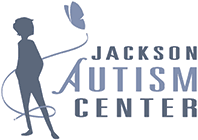Toilet training for a child with autism can be challenging! Here are a few tips to help this be a smooth transition.
#5 Allow your child to stay naked while focusing on toilet training at home. This makes it easier to get to the toilet and eliminate in it. As your child becomes more proficient, begin adding clothes back. Staying near the toilet is also a good idea in case an accident starts to happen, you can quickly move to the toilet.
#4 Have the child help change clothes. Part of learning to use the toilet is undressing and dressing oneself. When a child has an accident, it is a natural consequence to have to take off wet clothes, use a washcloth or baby wipe to clean up, and put fresh, dry clothes on. While some children may be in different places of learning how to dress or undress themselves, you as the parent or teacher can always choose one clothes item at a time to focus on the child putting on and taking off. Once they are more comfortable with that item, add another item.
#3 Have the child help clean up accidents. This is important because it helps the child become more independent and also take responsibility for making a mess. This doesn’t mean that you have to fuss at the child about the accident- it just means letting the child know they are wet/dirty and need to help clean up.
#2 Ditch the pull-up! Pull-ups do not teach anything about the sensation of being wet or wetting yourself. I think it sends a very confusing message to kids- why would you want to stop what you are doing to go to the bathroom if you don’t have to. Having an accident and feeling all wet and yucky may help a child make that connection and not want to feel that way again.
#1 You don’t have to wait until your child can acknowledge the need to use the bathroom…in that case, some of us may be waiting a very long time. Acknowledging the need to use the bathroom is important, but it shouldn’t stop a parent and/or teacher from beginning the toilet training process. For some, it may take a very long time to request going to the bathroom and for others, they might not ever request. Is it always necessary to request to use the bathroom? I don’t think so- when we are at work, we don’t have to ask permission to use the bathroom. At home, we don’t ask permission to go; we just go to the bathroom. For some individuals, they may just GO to the bathroom when they need to go. If a child learns to go into a bathroom to use it, we can always work on requesting permission as they become more fluent in going when they need to or we can accommodate the child in the fact that they may not ask when they go to the bathroom.
My favorite toilet training app is Potty Time. This app uses American Sign Language and a catchy little tune to teach about using the bathroom. And your child might just get addicted to “calling Rachel” when he or she has a success!
If you are getting frustrated or not having much luck on your own, it may be time to get some help. Jackson Autism Center works with children on toilet training privately. We have found the greatest successes with individuals we work with on a regular basis because there is an established relationship with the child, but we work with anyone needing help. Complete a contact form to find out about the next toilet training opportunities.


 Wow. I came across this
Wow. I came across this